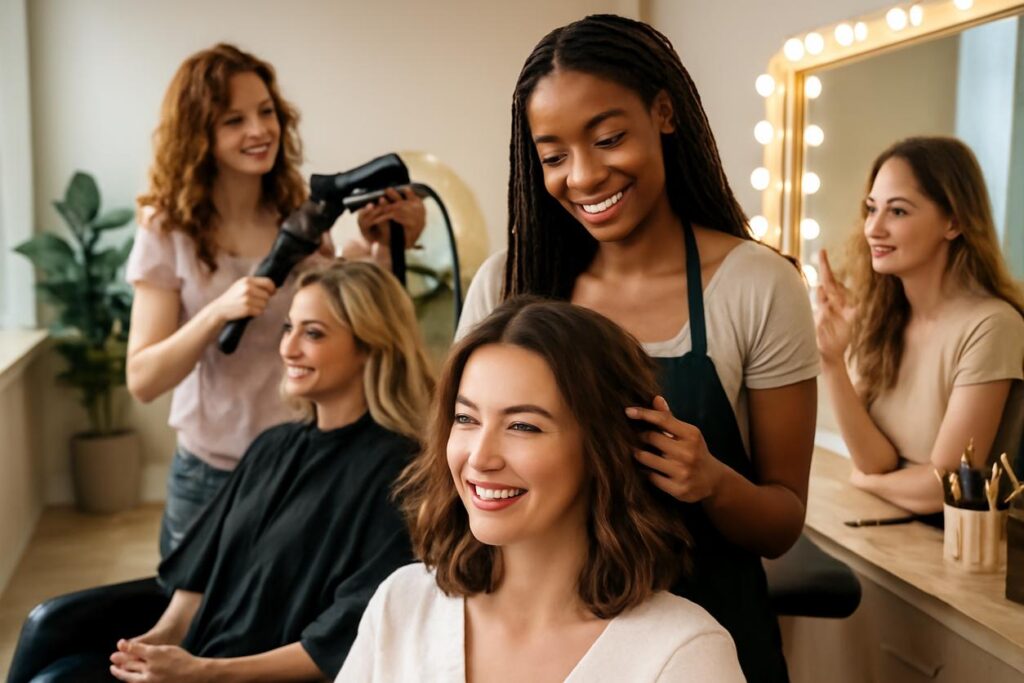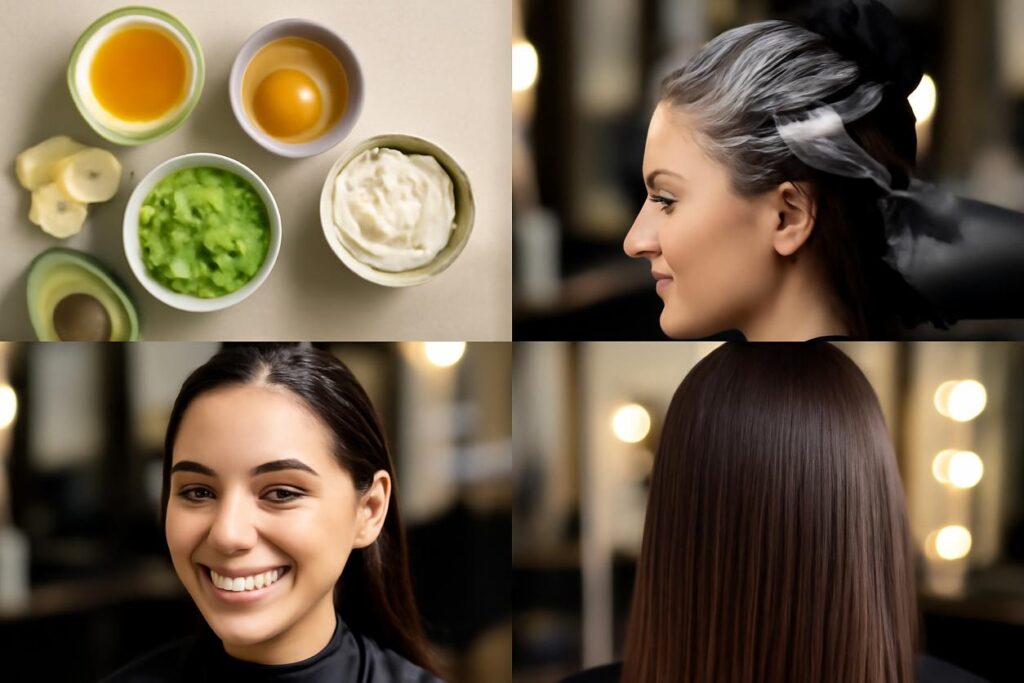Decoding Haircare Products: Your Complete Guide to a Healthy Scalp and Hair
Table of Contents
- Quick Start: Find Your Hair’s Baseline
- How to Decode Ingredient Labels — Actives, Conditioners, and Fillers
- A Simple Decision Matrix: Pick Product Types by Goal
- Ingredient Spotlights: What Helps, What Hides
- Patch Test & Sensitivity Checklist
- Weekly Routine Templates for Common Goals
- Small-Scale Experiments: How to Trial a New Product
- Sustainability & Clean-Label Considerations
- When to Consult a Hair Professional
- FAQ: Quick Answers to Common Product Questions
- Resources & Further Reading
Navigating the world of haircare products can feel overwhelming. With countless bottles promising miraculous transformations, it’s easy to end up with a cabinet full of items that don’t deliver. The secret to success isn’t finding a single “holy grail” product, but understanding your hair’s unique biology and choosing ingredients that meet its specific needs. This guide provides a decision-first framework to help you build an effective, personalized haircare routine based on science, not hype.
Instead of focusing on brands, we will explore the fundamental components of hair health. By learning to identify your hair’s characteristics and decode labels, you can confidently select the right types of haircare products to achieve your goals for 2025 and beyond.
Quick Start: Find Your Hair’s Baseline
Before you can choose the right tools, you need to understand the job. Your hair and scalp have a unique set of characteristics that dictate which products will work best. This is your baseline.
Hair Type and Porosity
Your hair’s structure is a primary factor. While most people know if their hair is straight, wavy, curly, or coily, porosity is an equally crucial, yet often overlooked, metric. Porosity determines how well your hair absorbs and retains moisture.
- Low Porosity: The hair cuticle is tightly packed. Hair takes a long time to get wet and a long time to dry. It’s prone to product build-up because products tend to sit on top of the hair shaft.
- Medium Porosity: The cuticle is looser, allowing moisture to penetrate and be retained effectively. This is often considered the “normal” or balanced porosity.
- High Porosity: The cuticle has gaps or holes, either from genetics or damage (colouring, heat styling). It absorbs water quickly but loses it just as fast, leading to frizz and dryness.
Simple Porosity Test: Take a clean, dry strand of hair and place it in a glass of water. After a few minutes, observe where it is. If it floats, you likely have low porosity. If it sinks slowly or stays in the middle, you have medium porosity. If it sinks quickly, you have high porosity.
Scalp Condition
A healthy scalp is the foundation of healthy hair. Your scalp’s condition determines the type of shampoo and scalp treatments you should use. Common conditions include:
- Oily: Gets greasy within a day or two of washing.
- Dry: Often feels tight, itchy, and may have small, white flakes.
- Balanced: Can go several days without feeling greasy or dry.
- Sensitive: Prone to redness, irritation, or reactions to certain ingredients.
Lifestyle Factors
Your daily habits significantly impact your hair’s needs. Consider how your lifestyle affects which haircare products you should use:
- Activity Level: Do you exercise frequently? Sweat can lead to build-up, requiring more frequent or clarifying washes.
- Environment: Do you live in a hard water area or a humid or dry climate? These factors affect dryness, frizz, and mineral build-up.
- Styling Habits: Regular use of heat tools or chemical treatments like colouring increases the need for reparative and protective products.
How to Decode Ingredient Labels — Actives, Conditioners, and Fillers
Ingredient lists (INCI) are written in descending order of concentration. The first five or six ingredients typically make up the bulk of the formula. Understanding the key categories helps you evaluate a product’s true purpose.
Actives
These are the ingredients designed to perform a specific function, like repairing damage or adding moisture. Examples include proteins (keratin, silk amino acids), vitamins (panthenol/B5), and unique botanical extracts. Their position on the label indicates their potency.
Cleansers & Conditioners
In shampoos, these are surfactants (like sulfates or their alternatives), which create lather and remove oil and dirt. In conditioners, they are cationic polymers, fatty alcohols (like Cetearyl Alcohol), and oils, which smooth the hair cuticle and add slip.
Fillers & Functional Ingredients
This category includes water (usually the first ingredient), thickeners (like xanthan gum), emulsifiers (which keep oils and water mixed), and preservatives (which prevent spoilage). While they don’t directly treat hair, they are essential for the product’s stability and texture.
A Simple Decision Matrix: Pick Product Types by Goal
Use your baseline assessment to choose product types that align with your primary goal. This table helps you decide what to look for in your core haircare products.
| Goal | Shampoo | Conditioner | Mask / Treatment | Leave-In Product |
|---|---|---|---|---|
| Hydration (for Dry/High Porosity Hair) | Sulfate-free, with moisturizing ingredients like glycerin or aloe vera. | Rich in oils, butters (shea, cocoa), and humectants (glycerin). | Weekly deep conditioning mask with fatty alcohols and oils. | Cream- or oil-based styler to seal in moisture. |
| Repair (for Damaged/Coloured Hair) | Gentle, colour-safe, and bond-building formulas. | Contains proteins (keratin, collagen) and ceramides. | Alternating protein and moisture treatments. | Heat protectant with sealing properties. |
| Volume (for Fine/Limp Hair) | Clarifying or volumizing shampoo to remove residue. Avoid heavy oils. | Lightweight, applied only to mid-lengths and ends. | Use sparingly; opt for lightweight pre-shampoo treatments. | Mousse, root-lift spray, or texturizing mist. |
| Scalp Balance (for Oily/Flaky Scalp) | Contains clarifying agents like salicylic acid or tea tree oil. Double cleansing can help. | Lightweight, avoid applying directly to the scalp. | Clay-based scalp mask to absorb excess oil. | Lightweight serum or tonic focused on scalp health. |
Ingredient Spotlights: What Helps, What Hides
Certain ingredients in haircare products are frequently debated. Here’s a balanced look at their roles.
Sulfates (e.g., Sodium Lauryl Sulfate)
What they do: These powerful detergents create a rich lather and are extremely effective at removing oil and product build-up.
Who should be cautious: Those with dry, colour-treated, or sensitive skin may find them stripping and irritating. They are excellent for a deep, clarifying wash but may be too harsh for daily use on certain hair types.
Silicones (e.g., Dimethicone)
What they do: Silicones coat the hair shaft, providing excellent slip, shine, and heat protection. They create a barrier that smooths the cuticle and reduces frizz.
Who should be cautious: Some silicones are not water-soluble and can build up over time, weighing hair down and preventing moisture from penetrating. This can be resolved with a regular clarifying shampoo. Water-soluble silicones (like those with “PEG” prefixes) wash out easily.
Proteins (e.g., Hydrolyzed Wheat Protein)
What they do: Proteins fill in gaps in the damaged hair cuticle, temporarily strengthening the strand. They are essential for repairing chemically treated or high-porosity hair.
Who should be cautious: Low-porosity hair can be sensitive to protein. Too much can cause “protein overload,” making hair feel brittle and stiff. It’s about finding the right moisture-protein balance for your hair type.
Oils & Butters (e.g., Coconut Oil, Shea Butter)
What they do: These ingredients are excellent at sealing in moisture and softening hair. Some oils, like coconut, can penetrate the hair shaft, while others, like jojoba, sit on top to lock in hydration.
Who should be cautious: Heavy oils and butters can weigh down fine hair or build up on low-porosity hair. The key is to choose oils appropriate for your hair density and porosity.
Patch Test & Sensitivity Checklist
Before incorporating any new haircare products into your routine, always perform a patch test to check for adverse reactions. This is especially important if you have a sensitive scalp.
- Select a Test Area: Choose a discreet spot of skin, such as behind your ear or on your inner elbow.
- Apply the Product: Dab a small amount of the product onto the clean, dry test area.
- Wait and Observe: Leave the product on for as long as you would during normal use (or up to 24 hours, if possible, for leave-in products). Do not rinse cleansers or conditioners immediately; let them sit for a few minutes.
- Check for Reactions: Look for any signs of redness, itching, burning, or rash. If you experience any discomfort, wash the area thoroughly and discontinue use of the product.
- Perform a Strand Test: For stylers or treatments, test on a small, hidden section of your hair to see how it behaves before applying it all over.
Weekly Routine Templates for Common Goals
These are flexible templates for your 2025 haircare strategy. Adjust the frequency based on your baseline assessment. The goal is consistency with the right types of haircare products.
Routine for Fine or Limp Hair
- Wash Days (2-4x per week): Use a volumizing or lightweight shampoo. Apply a lightweight conditioner only from the mid-lengths to ends.
- Clarifying Day (1x per 1-2 weeks): Use a clarifying shampoo to remove build-up that weighs hair down.
- Styling: Apply mousse or root-lifting spray to damp roots before blow-drying.
Routine for Curly or Coily Hair (High Porosity)
- Wash Day (1-2x per week): Cleanse with a moisturizing, sulfate-free shampoo. Follow with a rich, hydrating conditioner, using the “squish to condish” method to encourage curl clumps.
- Mid-Week Refresh: Revive curls with a water and leave-in conditioner spray.
- Deep Condition (1x per week): Use a hydrating mask. Alternate with a protein treatment every 4-6 weeks if hair is damaged.
- Styling: Apply a cream and gel to soaking wet hair to define curls and lock in moisture.
Small-Scale Experiments: How to Trial a New Product Without Overloading Your Hair
When you introduce a new product, do it systematically to accurately gauge its effect.
- Introduce One Product at a Time: Don’t overhaul your entire routine at once. Replace just one item, like your conditioner, and use it for at least 2-4 weeks.
- Keep Everything Else Consistent: Continue using your usual shampoo, stylers, and techniques. This isolates the new product as the only variable.
- Observe and Note: Pay attention to how your hair feels and looks. Is it softer, more defined, greasier, or drier? A simple note on your phone can help track changes.
Sustainability & Clean-Label Considerations
Choosing effective haircare products can also align with your values. As you shop, consider these aspects:
- Packaging: Look for products with minimal packaging, recycled materials (PCR), or refillable options.
- Cruelty-Free: Check for certifications like the Leaping Bunny logo, which indicates no animal testing was performed.
- Certifications: Labels like “organic” or “natural” can be unregulated. Look for third-party certifications for assurance. For more information, explore resources like Sustainable Cosmetics Guidance.
When to Consult a Hair Professional
While a good routine can solve many issues, some conditions require professional expertise. Consult a dermatologist or a certified trichologist if you experience:
- Sudden or significant hair loss.
- A persistently itchy, painful, or flaky scalp that doesn’t resolve.
- Patches of baldness or thinning.
- Suspected allergic reactions or severe scalp inflammation.
For guidance from medical experts, the British Association of Dermatologists offers reliable information.
FAQ: Quick Answers to Common Product Questions
How often should I wash my hair?
This depends entirely on your scalp and lifestyle. Oily scalps may need daily washing, while dry or curly types might wash only once or twice a week. Listen to your hair and scalp.
Is it possible to use too much conditioner?
Yes. Over-conditioning can weigh hair down, especially if it’s fine. Apply conditioner primarily to the mid-lengths and ends, where hair is the oldest and driest.
Do I need a heat protectant?
If you use any heat styling tools (blow dryer, straightener, curling iron), a heat protectant is non-negotiable. It creates a barrier that minimizes heat damage.
Resources & Further Reading
For those who wish to dive deeper, these resources provide evidence-based information on hair health and product safety.
- Hair Nutrition: Learn about the link between diet and hair health from the NHS.
- Scientific Research: Search for peer-reviewed studies on hair biology and ingredients on PubMed.
- Ingredient Safety: Review cosmetic ingredient safety assessments from the Cosmetic Ingredient Review (CIR).






